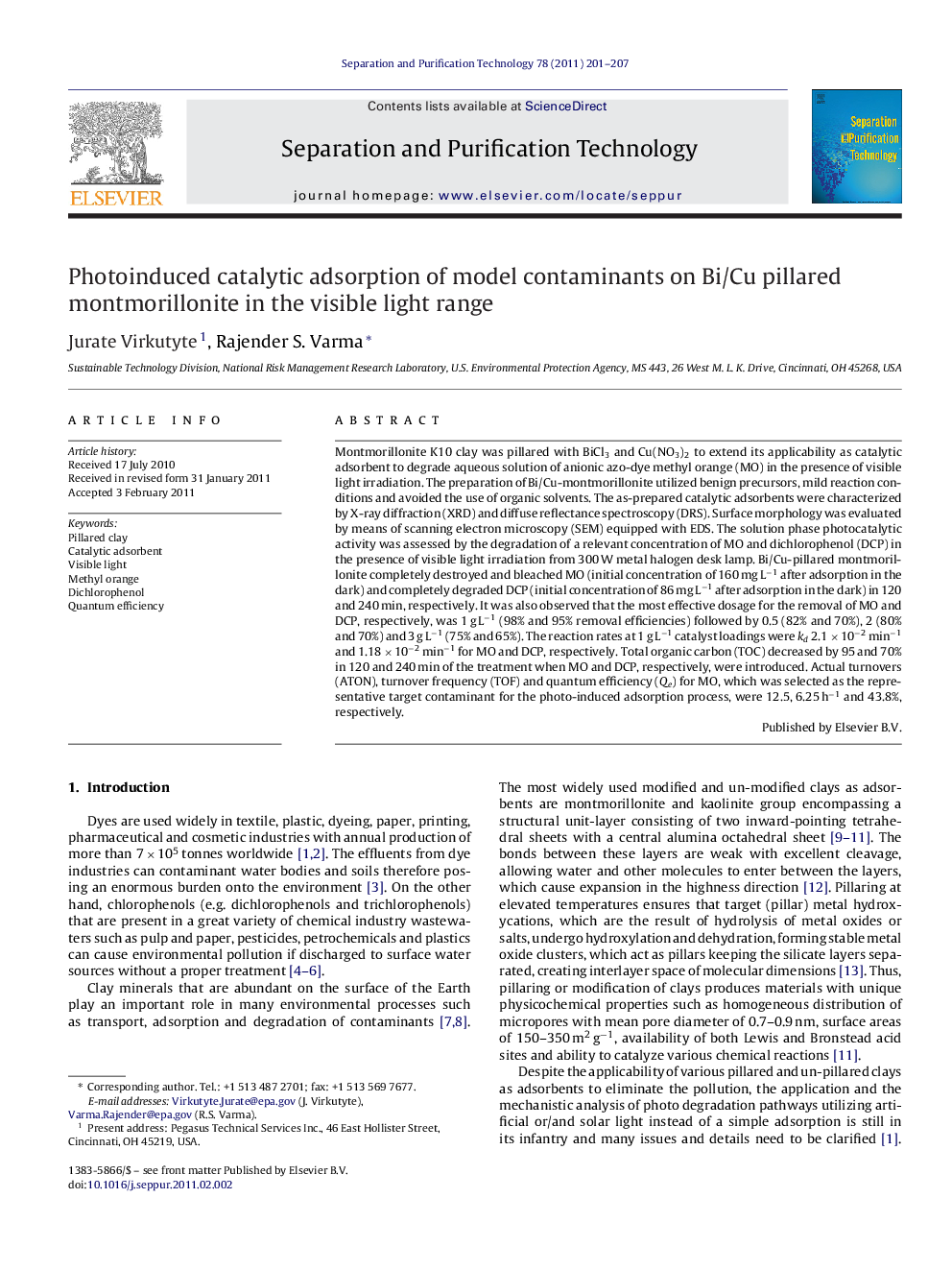| کد مقاله | کد نشریه | سال انتشار | مقاله انگلیسی | نسخه تمام متن |
|---|---|---|---|---|
| 642726 | 884334 | 2011 | 7 صفحه PDF | دانلود رایگان |

Montmorillonite K10 clay was pillared with BiCl3 and Cu(NO3)2 to extend its applicability as catalytic adsorbent to degrade aqueous solution of anionic azo-dye methyl orange (MO) in the presence of visible light irradiation. The preparation of Bi/Cu-montmorillonite utilized benign precursors, mild reaction conditions and avoided the use of organic solvents. The as-prepared catalytic adsorbents were characterized by X-ray diffraction (XRD) and diffuse reflectance spectroscopy (DRS). Surface morphology was evaluated by means of scanning electron microscopy (SEM) equipped with EDS. The solution phase photocatalytic activity was assessed by the degradation of a relevant concentration of MO and dichlorophenol (DCP) in the presence of visible light irradiation from 300 W metal halogen desk lamp. Bi/Cu-pillared montmorillonite completely destroyed and bleached MO (initial concentration of 160 mg L−1 after adsorption in the dark) and completely degraded DCP (initial concentration of 86 mg L−1 after adsorption in the dark) in 120 and 240 min, respectively. It was also observed that the most effective dosage for the removal of MO and DCP, respectively, was 1 g L−1 (98% and 95% removal efficiencies) followed by 0.5 (82% and 70%), 2 (80% and 70%) and 3 g L−1 (75% and 65%). The reaction rates at 1 g L−1 catalyst loadings were kd 2.1 × 10−2 min−1 and 1.18 × 10−2 min−1 for MO and DCP, respectively. Total organic carbon (TOC) decreased by 95 and 70% in 120 and 240 min of the treatment when MO and DCP, respectively, were introduced. Actual turnovers (ATON), turnover frequency (TOF) and quantum efficiency (Qe) for MO, which was selected as the representative target contaminant for the photo-induced adsorption process, were 12.5, 6.25 h−1 and 43.8%, respectively.
Figure optionsDownload as PowerPoint slideResearch highlights
► Stable and photo-active catalytic adsorbent that is active in the visible light was produced.
► Optimized and totally benign aqueous protocol did not involve the use of any organic solvents or hazardous substances.
► The use of highly abundant precursor was demonstrated.
Journal: Separation and Purification Technology - Volume 78, Issue 2, 11 April 2011, Pages 201–207